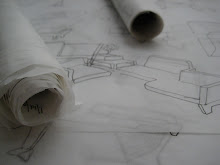I went with my mother today to the Norman Rockwell Exhibit at the North Carolina Museum of Art in Raleigh. While I was relatively familiar with his style and his catalog of work, I was amazed at the sheer volume of his portfolio. He illustrated the cover of The Saturday Evening Post for several decades, as well as providing illustrations for the Boy Scouts of America in their handbook and other training materials. As an Eagle Scout, I was very familiar with his Scout-related illustrations throughout my youth.
While I suppose that in the back of my mind I was somehow aware of this, I only just today made the "out loud" realization that Rockwell was not just a painter and fine artist, but also a social observer and commentator. His work (specifically its symbology) occasionally strayed close to the political, perhaps even the propagandistic at times, though I would never claim that his work was politically motivated. The messages of culture and politics can sometimes bleed together in images as rich in detail and nuance as his. Ultimately, his message is about humanity and the joys and travails of being human. As a student of material culture and design history, I find it refreshing to take a new look at his work; it is rich with overlapping layers of meaning, signifying and illuminating the varied class structure in America in the early to mid-20th century. His skill at portraying the human expressions of excitement, fear, boredom, despair, guilt, happiness, relaxation and countless others is remarkable. His use of his particular painterly style displays the patina of life as it occurs to the objects around us everyday, from shoes to baseball bats to pets to Us.
I really enjoyed the chance to see his work again, especially now that my graduate research has influenced my perspective on the objects we find in the built environment. Rockwell's work was many things to many people, but to me his examination of the material environment that surrounds us all showed his understanding of the place of OBJECTS in our lives. As Westerners in an increasingly materialistic culture, Rockwell understood that the cut of a man's suit or the condition and appearance of his shoes communicated something more that just the current state of his clothing. The same can be said of the early 20th century interiors that were the common backdrop for much of his work. These works were very much about the people portrayed within them, but aside from the humanity he expressed through body language, I found the objects and environments in his work to be extremely powerful devices for communicating the subjects' stories. It is this awareness of object and materiality (not materialism) that I found most stimulating and engrossing throughout his body of work. Thanks for listening.
Subscribe to:
Post Comments (Atom)



No comments:
Post a Comment